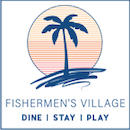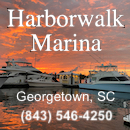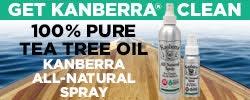CURRENT LOCAL NOTICES TO MARINERS
Here are the latest Local Notices to Mariners and NAV ALERTS that are relevant to ICW cruising in Districts 5, 7 and 8, the OBX, AICW, OWW, Keys, GIWW and adjacent waters. Open each LNM link for the USCG notice and a chart for each location. Listed north to south to north. NAV ALERTS will also be posted on our Homepage.
For previous Local Notices, go to the Specific State or Region on our Homepage
Week 50/25
LNM: Off , Chincoteague Inlet Lighted Buoy 6 Missing
LNM: Off GIWW-East MM:285.2, Section Base Channel Range Front Light Extinguished
LNM: AIWW MM:1,032.1, Lake Worth South Light 41 Destroyed
LNM: AIWW MM:1,016.6, Lake Worth North Light 34 Improper Characteristics
LNM: Off AIWW, Roanoke Island West Side Light 4 Set TRLB
LNM: Off , Rollinson Channel Light 39 Missing
LNM: AIWW MM:1,150.7, Ramshorn Shoal Daybeacon 68 Extinguished
LNM: Off AIWW, Oregon Inlet Lighted Buoy 12 Shoaling
LNM: Off AIWW, Oregon Inlet Lighted Buoy 13 Shoaling
LNM: Off AIWW, Oregon Inlet Buoy 14 Shoaling
LNM: AIWW MM:1,077.4, Dumfoundling Bay Daybeacon 54 Missing
LNM: Off , Rollinson Channel Light 39 Offstation
LNM: AIWW MM:716.5, Amelia River Lighted Buoy 10 Extinguished
LNM: Off GIWW-East MM:162.4, Perdido Pass Buoy 4 Offstation
LNM: GIWW-West MM:503.6, San Antonio Bay Daybeacon 35 Destroyed
LNM: GIWW-West MM:503.1, San Antonio Bay Daybeacon 33 Missing
LNM: GIWW-West MM:502.3, San Antonio Bay Daybeacon 30 Missing
LNM: GIWW-West MM:497.9, San Antonio Bay Daybeacon 20 Missing
LNM: GIWW-West MM:503.6, San Antonio Bay Daybeacon 35 Destroyed
LNM: GIWW-West MM:634.5, Land Cut-Arroyo Colorado Daybeacon 93 Offstation
LNM: GIWW-West MM:637.7, Land Cut-Arroyo Colorado Daybeacon 107 Leaning
LNM: GIWW-West MM:641.1, Land Cut-Arroyo Colorado Daybeacon 122 Destroyed
LNM: AIWW MM:464.1, Winyah Bay-Charleston Harbor Light 130 Missing
LNM: AIWW MM:882.3, Indian River (North Section) Light 38 Extinguished
LNM: AIWW MM:300.5, Upper Midnight Channel South Range Front Light Extinguished
LNM: AIWW MM:713.0, Cumberland Sound Lighted Buoy 27 Partially Submerged
LNM: AIWW MM:794.1, Matanzas River Daybeacon 83A Adrift
LNM: AICW MM 15.2, Centerville Turnpike Bridge Deviated Schedule, Centerville, VA
Week 49/25
LNM: Off AIWW MM:465.9, Wando River Terminal Lighted Buoy 6 Extinguished
LNM: Off AIWW, Big Foot Slough Channel Lighted Buoy 9C Extinguished
LNM: Off AIWW-Hawk Channel MM:1,232.4, Eastern Sambos Shoal Daybeacon Missing
LNM: Off , Western Dry Rocks Daybeacon K Missing
LNM: GIWW-West MM:470.8, Matagorda Ship Channel A Range Rear Light Extinguished
LNM: AIWW MM:1,077.4, Dumfoundling Bay Daybeacon 54 Destroyed
LNM: AIWW MM:214.9, Bogue Sound Daybeacon 19 Damaged
LNM: Off AIWW, Thimble Shoal Lighted Buoy 11 Extinguished
LNM: Off AIWW MM:292.0, Big Island Lower South Range Rear Light Extinguished
LNM: AIWW MM:850.5, New Smyrna Beach Light 57 Set TRUB
LNM: GIWW-West MM:677.0, Brownsville Channel Light 46 TRLB Relocated
LNM: Off AIWW MM:457.6, Charleston Harbor Channel Lighted Buoy 9 Extinguished
LNM: AIWW MM:1,107.7, Featherbed Bank Light 3 Extinguished
LNM: Off AIWW, Chesapeake Channel Lighted Buoy 24 Extinguished
LNM: AIWW MM:126.9, Pungo River Channel Light 25 Extinguished
LNM: Off GIWW-East MM:163.7, Perdido Pass Buoy 10 Offstation
LNM: Off AIWW, Old House Channel Buoy 4 Relocated
LNM: Off AIWW MM:463.2, Charleston Harbor Channel Lighted Buoy 23 Offstation
LNM: Off GIWW-East MM:162.4, Perdido Pass Buoy 7 Offstation
LNM: Off AIWW, Old House Channel Lighted Buoy 1H Relocated
LNM: Caloosahatchee River Daybeacon 80 Set TRUB
LNM: AIWW MM:850.5, New Smyrna Beach Light 57 Missing
LNM: Off GIWW, Brownsville Channel D Range Rear Light Extinguished
LNM: Off GIWW, Brownsville Channel D Range Front Light Extinguished
LNM: GIWW-West MM:499.3, San Antonio Bay Light 23 Set TRUB
LNM: Indian River Daybeacon 208 Set TRLB
LNM: Okeechobee Waterway is Fully Operational – Effective 12/1/25
LNM: AIWW MM:579.1, Wilmington River Light 19 Extinguished
Week 48/25
LNM: AIWW MM:281.3, New River – Cape Fear River Daybeacon 124 Missing
LNM: OWW MM:2.6, St Lucie River Light 19 Set TRLB
LNM: OWW MM:2.6, St Lucie River Light 19 Damaged
LNM: AIWW MM:1,033.1, Lake Worth South Daybeacon 45 Missing
LNM: AIWW MM:238.3, Bogue Sound – New River Buoy 60 Temp Disestablished
Week 47/25
LNM: Off AIWW, Chincoteague Inlet Lighted Buoy 8A Temporarily Discontinued
Week 44/25
LNM: Off GIWW-East MM:127.2, Bayou Aloe Daybeacon 6 Missing
LNM: Off GIWW-East MM:124.5, Dauphin Island Wreck Light WR1 Destroyed
LNM: Off AIWW MM:778.5, St Augustine Inlet Lighted Buoy 6 Missing
LNM: Off St. Johns River, St Augustine Inlet Buoy 3 Missing
LNM: Off St. Johns River, St Augustine Inlet Buoy 2 Missing
LNM: Off AIWW MM:975.3, St. Lucie Power Plant Lighted Buoy G Offstation
LNM: Off AIWW MM:974.0, St. Lucie Power Plant Lighted Buoy A Offstation
Week 09/25
FWC Commissioners approve new rule establishing boating restricted area in Jupiter Narrows
Week 39/23
LNM: Alt ICW MM 7, Long Term Deep Creek Bridge Replacement, Dismal Swamp Canal, NC
For previous Local Notices, go to the Specific State or Region on our Homepage
































Be the first to comment!